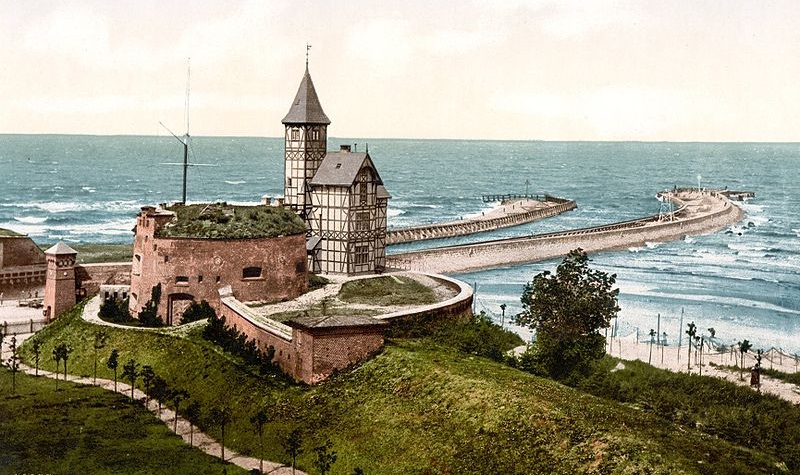Fort Ujście, also known as Fort Münde, is a significant historical element of Kołobrzeg, located at the mouth of the Parsęta River on its right bank. The fort was built between 1770 and 1774 on the site of a previous earthen redoubt from 1627, and its construction was a response to wartime experiences from 1760-1761, which showed that the existing fortifications were insufficient to protect the military port from enemy forces.
History of the Fort
- 1627: The first earthen fortifications were constructed here, serving as an earthen redoubt.
- 1770-1774: Construction of Fort Ujście as a response to the need for enhanced defense of the military port.
- 19th century: A lighthouse was placed on the fort from the sea side.
- 1832-1836: The fort underwent modernization.
- 1945: Fort Ujście was the last point of German defense of the Fortress Kołobrzeg, which was evacuated on the night of March 17 to 18.
After World War II
After the end of World War II, Soviet soldiers built a new brick lighthouse on the fort’s rotunda. Besides its primary navigational function, this lighthouse also served as a monument to the heroism of the Soviet Army.
Architecture and Current Use
Fort Ujście is preserved in the form of a three-story brick rotunda:
- Basement: Storage area.
- Ground floor: Infantry room.
- First floor: Artillery position.
The entire structure is surrounded by a brick wall. The fort is open for visitors and serves various recreational and tourist functions:
- Gift stalls: During the summer season, souvenir stands are located around the fort from the port side.
- Green square: A part of the area around the fort is occupied by a green square.
- Café: A café has been set up in the basement of the rotunda.
- Observation deck: There is an observation deck on the lighthouse, offering panoramic views of Kołobrzeg and its surroundings.
Fort Ujście is an interesting tourist spot, combining rich history with recreational functions, attracting both history enthusiasts and tourists looking for picturesque views and relaxation.

